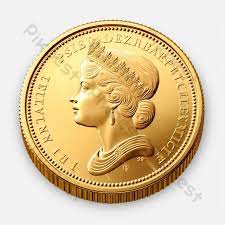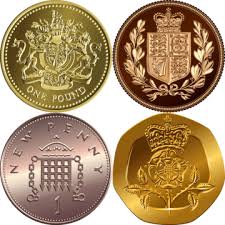Elizabeth Alexandra Mary, or simply Elizabeth II, is perhaps known to the whole world. In the entire history of Foggy Albion, no one ruled for so long. In addition, she is the oldest and longest-reigning, to date, monarch in the whole world!
The ninety-three-year-old reigning Queen of Great Britain and Northern Ireland belongs to the Windsor dynasty. Elizabeth sat on the throne of the empire in 1952, when she was only twenty-five years old, succeeding her father George VI on the throne. The reign of Elizabeth fell a very rich period in the history of Britain and the world -second half of the 20th century.
And at the beginning of March 2015, a significant event happened for numismatists around the globe – the British updated the portrait of Elizabeth II on coins. The last time the portrait was updated was in 1998.
The presentation of the new image of the Queen was held at the National Portrait Gallery in London. The winner, whose work was honored to decorate pennies and metal pounds, was illustrator Jody Clark (b. 1981).
Coins bearing this portrait are still minted today. Portrait of Elizabeth II on the obverse of the 50 pence coin and the reverse of the 1 pound and 1-50 pence coins. 2008 design “Shield of the Royal Arms”. It is divided into four parts.
The reverses of British coins change regularly, only the obverse is unchanged. It must contain the face of the ruling monarch. Approved in 2015, the portrait is the fourth currently in circulation, following portraits created in 1968, 1985 and 1998. All of them vividly paint a picture of the history of life and the reign of Her Majesty.
The first portrait of Elizabeth graced British coins in 1953. Mary Gillick (1881-1965) became its author. The queen looks young and optimistic on it.
Gillick’s image is different in that it shows off the Queen’s shoulders – as was the case on most of Queen Victoria’s coins. In contrast to Elizabeth’s father, uncle, grandfather and great-grandfather, on whose coin portraits only the head was shown.
Sixpence 1953 with a portrait by Mary Gillick. Diameter 23.59 mm. Melchior. Weight 2.83 g. On the lower edge of the portrait, the author’s initials “MG” – Mary Gillick
Sixpence 1953 with a portrait by Mary Gillick. Diameter 23.59 mm. Melchior. Weight 2.83 g. On the lower edge of the portrait, the author’s initials “MG” – Mary Gillick
Although the transition to a decimal monetary system took place in 1971, decimal coins entered circulation somewhat earlier. The new denominations had approximately the same size and weight (23.59 mm, 5.65 g and 28.5 mm, 11.31 g, respectively), so they went along with the old ones until 1971. In a new portrait by Arnold Machen (1911-1999), the Queen was wearing the Bridal Crown or Tiara of the Girls of Great Britain and Northern Ireland instead of a wreath.
The queen’s hair is flowing freely, and a cloth is thrown over her shoulders. Although the portrait traditionally shows the profile of the Queen, one might think that she is depicted “from behind”. This led some critics to consider the portrait too spicy. Machen clearly outlined his position: “I wanted to create an image filled with charm and dignity, but without sentimentality.”
Ten pence 1968 with a portrait by Arnold Machin (did not put his initials on the portrait). Diameter 28.50 mm. Copper-nickel alloy. Weight 11.33 g
Ten pence 1968 with a portrait by Arnold Machin (did not put his initials on the portrait). Diameter 28.50 mm. Copper-nickel alloy. Weight 11.33 g
From 1985 to 1997, the royal portrait of the sculptor Raphael Malouf (b. 1937) was minted on British coins. The portrait depicts the Queen wearing the George IV Diamond Diadem, which she usually wears to the annual Opening of Parliament.
Unlike earlier portraits, here the queen wears a necklace and earrings. Malouf was accused by critics of portraying the queen as “flatteringly young”, but he responded that his intention was “to create a symbol that is regal and ageless”.
Fifty pence 1997 with a portrait by Raphael Malouf. Diameter 27.30 mm. Copper-nickel alloy. Weight 7.93 g. The portrait was called “Royal and ageless”. On the lower edge of the portrait are the initials of the author “RDM” – Raphael David Malouf
Fifty pence 1997 with a portrait by Raphael Malouf. Diameter 27.30 mm. Copper-nickel alloy. Weight 7.93 g. The portrait was called “Royal and ageless”. On the lower edge of the portrait are the initials of the author “RDM” – Raphael David Malouf
The idea to replace Malouf’s portrait arose during a competition to design the obverse of a commemorative coin commemorating the fiftieth anniversary of the marriage of Elizabeth and Prince Philip (1997). The winning design by Ian Rank-Bradley (b. 1952) presented in 1998 provides an interesting contrast to its predecessor portrait.
In 1489, the first king of their family, named Henry VII (1485-1509), ordered to start minting gold, which later received the original name “sovereign”. The latter originates from the word “sovereign” (“ruler”), which was clearly associated with the image of the English monarch sitting on the throne, which was usually minted on the obverse side of the coin. The image on the sovereign of 1492 has the remotest portrait resemblance to the founder of the Tudor dynasty.
He is shown on the throne in solemn attire with all the imperious regalia, drapery with French fleurs-de-lis is visible behind the king. Although then the Hundred Years War (1337-1453) had long since ended, the English rulers were in no hurry to forget about their former claims to the French throne. This is confirmed by a circular legend in Latin.
which is translated into Russian as “Henry, by the grace of God, King of England and France, ruler of Ireland.” In the center of the reverse is a shield with the royal coat of arms (the lions of the Plantagenets and the lilies of the Capetians are clearly visible) against the background of the heraldic rose of the Tudors. The symbols are framed by an excerpt from the Gospel of John: “But Jesus passed among them and went on.” It mentions the moment when the Pharisees intended to stone the Messiah during one of his sermons.





